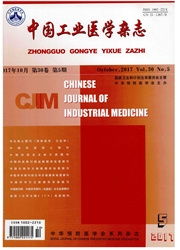

 中文摘要:
中文摘要:
矽肺是指长期接触二氧化硅粉尘后,潴留肺内的粉尘引起的以肺组织慢性持续性炎症与进行性纤维化为主要病理特点的全身性疾病,其基本病理变化过程为肺泡炎、肺肉芽肿、肺纤维化。肺泡巨噬细胞介导的固有免疫在矽肺炎性反应中起着重要的作用:由于吸入性二氧化硅尘粒形态十分类似病原体相关分子模式(PAMPs)或危险相关分子模式(DAMPs),可引起肺泡巨噬细胞的清道夫受体(SR)、Toll样受体(TLRs)或核苷酸结合寡聚化结构域(NOD)样受体(NLRs)等模式识别受体(PRRs)识别,从而通过激活胞内NLRP3炎性体,介导肺泡巨噬细胞的细胞焦亡(pyroptosis),进而释放白介素、前列腺素等促炎因子,导致肺组织炎性反应;与此同时,部分活化的肺泡巨噬细胞还会发挥抗原递呈作用,启动T细胞免疫机制,加剧肺内炎性反应,最终导致肺组织纤维化。
 英文摘要:
英文摘要:
Silicosis is a sort of systemic disease resulted from long-term exposure to silica dust,characterized by chronic persistent inflammation and progressive fibrosis in lung tissue,and its basic pathological changes present alveolitis,pulmonary granulomas,pulmonary fibrosis. The innate immune response mediated by alveolar plays an important role in inflammatory reaction during the process of silicosis.Owing to the morphology of inhalable silicon particles in very similar to pathogen associated molecular patterns( PAMPs) or danger associated molecular patterns( DAMPs),they may be easily recognized by scavenger receptors( SR),pattern recognition receptors( PRRs) including Toll like receptor( TLRs) and nucleotide binding oligomerization domain( NOD) receptors( NLRs) located on the surface of alveolar macrophages. Thereby,the NLRP3 inflammsomes are activated,which to results in the pyroptosis of alveolar macrophages,then the release of various inflammatory factors such as interleukin,prostaglandin etc. At the same time,some activated alveolar macrophages may act as antigen presenting cells to initiate T cell immunity,aggravate inflammatory reaction.
 同期刊论文项目
同期刊论文项目
 同项目期刊论文
同项目期刊论文
 期刊信息
期刊信息
